Scandinavian Folk Art
- Emilie Collings
- May 23, 2024
- 4 min read
Updated: May 28, 2024

Scandinavian folk art encompasses a rich tradition of artistic expression from Denmark, Norway, Sweden, Finland, and Iceland, characterized by several common aspects despite variations across these countries.
Nature and landscape themes are prominent, with motifs inspired by the region's natural surroundings, such as forests, mountains, animals, and bodies of water, reflecting a deep connection to the environment. Geometric patterns are also prevalent, appearing in textiles, woodcarvings, and other crafts, often utilizing symmetry and repetition to create intricate designs.
Floral and plant motifs, including flowers, leaves, and plants, are popular and frequently incorporated into various art forms like paintings, textiles, and embroidery. Traditional Scandinavian folk art is known for its vibrant and bold color palette, with reds, blues, yellows, and greens creating eye-catching and cheerful designs.
Functional crafts play a significant role, with many items serving utilitarian purposes. Examples include carved wooden utensils, textiles (shown above), and pottery (shown below) that are both decorative and practical. Woodcarving is a prominent aspect, showcasing the skill and craftsmanship of artists through intricate carvings on furniture, tools, and decorative objects.
A distinctive style of decorative painting known as rosemaling (shown below) originated in Norway, featuring colorful floral patterns painted on various surfaces such as furniture, woodenware, and household items. Traditional Scandinavian textiles often feature intricate embroidery and weaving techniques, with patterns that include floral and geometric designs, commonly found in clothing, tapestries, and other fabric-based items.
Handcrafted ceramics and pottery are part of Scandinavian folk art traditions, often featuring regional patterns and designs in both functional and decorative pieces. Mythical and folklore themes also play a crucial role, with Scandinavian folklore and mythology, including Norse mythology, influencing many aspects of their folk art. Imagery of mythical creatures, legends, and symbols from their cultural heritage can be found in various artistic expressions.
These common symbols add to the distinctive and culturally rich character of Scandinavian folk art, reflecting the history, traditions, and natural beauty of the region.
Common Symbols in Scandinavian Folk Art
Scandinavian folk art, with its rich cultural heritage, often incorporates symbols that carry specific meanings or cultural significance. One prominent symbol is rosemaling, a traditional Norwegian decorative painting style featuring floral patterns and scrollwork, which often represents nature, growth, and beauty.
The Dala Horse (shown above) is a carved and painted wooden horse from Sweden, symbolizes strength, prosperity, and good luck.
Viking ships, representing exploration and adventure, highlight the seafaring history of the Nordic people. In Nordic folklore, the troll cross is believed to ward off evil spirits, particularly trolls. Dragons, associated with protection, are seen as guardian creatures in Scandinavian mythology.
Horses, symbolizing strength, freedom, and loyalty, are frequently depicted in Scandinavian folk art. Additionally, landscape elements such as mountains, forests, and bodies of water are commonly illustrated, reflecting the natural beauty and deep connection to the environment.
Use of Colour in Scandinavian Folk Art
Scandinavian folk art is renowned for its distinctive colour palette, characterized by a blend of earthy tones and vibrant hues. Prominent colours in this art form include red, blue, yellow, green, white, black, and metallic accents like gold and silver. Red, often seen in floral motifs, geometric patterns, and general decoration, symbolizes warmth, love, and prosperity, and is featured in traditional costumes, textiles, and wooden objects.
Blue, ranging from deep indigo to lighter shades, represents the sky, water, and Nordic landscapes, and is frequently paired with white to create crisp designs in textiles, ceramics, and paintings. Yellow, especially warm and golden tones, is associated with sunlight and prosperity, adding vibrancy to floral accents, geometric designs, and backgrounds. Green represents the lush nature of the region, appearing in floral motifs, foliage, and landscapes.
White symbolizes purity, simplicity, and snowy landscapes, often used as a background colour or in intricate patterns to create contrast with vibrant motifs. Black is utilized for outlining and defining shapes, adding contrast and depth to colourful designs, particularly in woodcarvings and decorative patterns. Gold and silver accents introduce a touch of luxury and elegance, especially in rosemaling and other decorative techniques.
Earth tones, such as browns and greys, are common in woodcarvings and ceramics, adding a natural and subdued feel. Brown, frequently used in woodworking, carvings, and scenes of country life, represents the elements of nature, while grey creates delicate tones and shading, balancing the overall organic design.
It is important to remember that different artists, and regional styles, might have an impact on the particular colour scheme. Generally though, there a recurring theme in Scandinavian folk art is the use of vivid, contrasting colours, which adds to the genre's unique and eye-catching style.
The Nordic atmosphere, with its emphasis on nature, simplicity, and a connection to the changing seasons, is reflected in this combination of colours. The overall appeal and distinctiveness of the artistic traditions of the region are enhanced by the frequent use of these colours in rosemaling, textile arts, and traditional crafts, among other kinds of Scandinavian folk art.
Below is Scandinavian designs by other illustrators which I found inspirational whilst I was doing my research. Folk designs often have an element of symmetry included in the design, however I decided not to include symmetry in my design in the end:
Below are some examples of Instagram posts from illustrators I follow because I love their style, which are relevant to this project:
Below are some flowers that I created in Adobe Illustrator before I had decided which way the project was going to go. I used the pen tool to create the flowers.
I was also experimenting with Rosemaling and Dala Horses shown below:



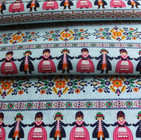









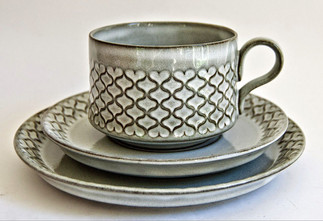

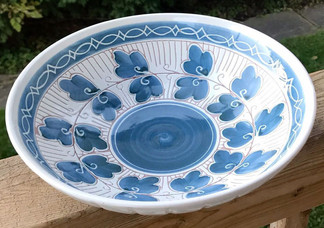













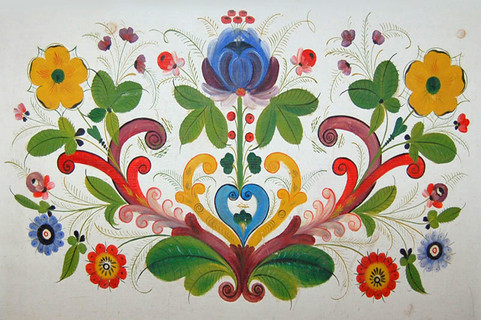



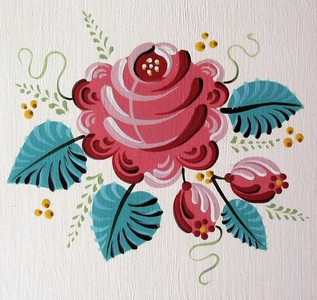









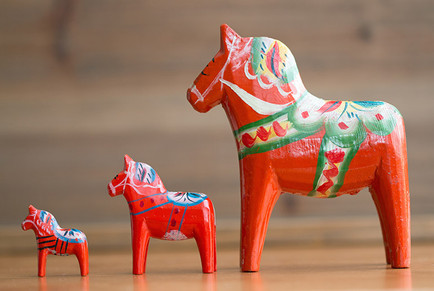











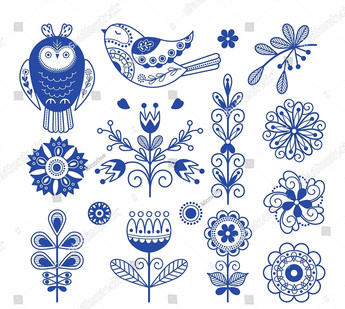
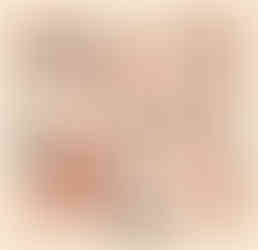


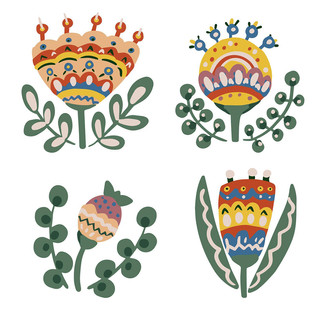













































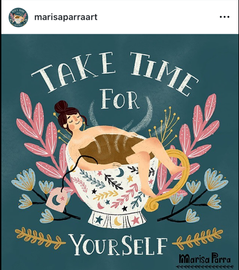
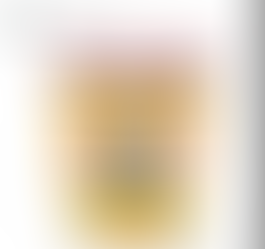






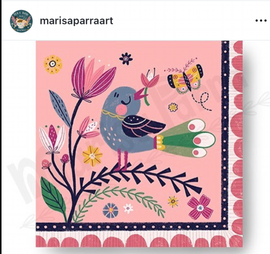

















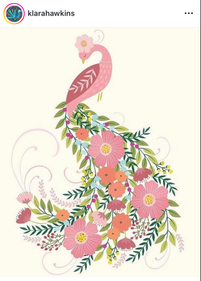





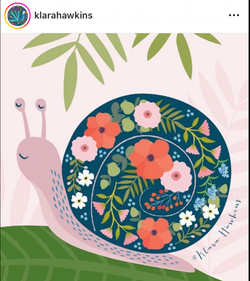

























Comments